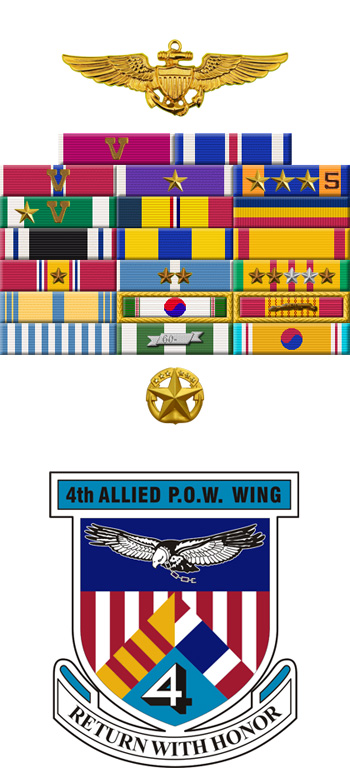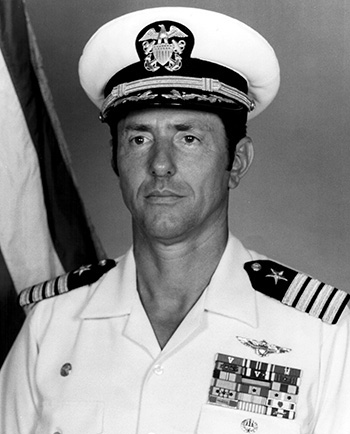
|
Charlie N. James, Jr. |
 |
|||
| Rank, Service | ||||
Captain O-6, U.S. Navy |
||||
| Veteran of: | ||||
|
||||
| Tribute: | ||||
Charlie James was born on October 29, 1929, Los Angeles, California. He enlisted in the U.S. Navy on February 12, 1947, and after completing basic training at NTC San Diego, California, he attended Electronics School from May 1947 to May 1948. His first assignment was as an Electronics Technician at Mare Island, California, from June to July 1948, followed by service as an Electronics Technician at U.S. Submarine Base Pearl Harbor, Hawaii, from July 1948 to September 1949. He then attended the Naval Academy Prep School at NS Newport, Rhode Island, from September 1949 to April 1950, when he was accepted into the Naval Aviation Cadet Program, earning his commission as an Ensign and designation as a Naval Aviator on November 1, 1951. Ens James next completed All Weather Flight Training at NAS Corpus Christi, Texas, from November 1951 to January 1952, followed by service as an AD-4 Skyraider pilot with VA-55 at NAS Miramar, California, from February 1952 to July 1953. During this time, Ens James flew 64 combat missions in Korea from the aircraft carrier USS Essex (CVA-9) from June 1952 to February 1953. His next assignment was as an AD-6 pilot with VA-115 at NAS San Diego from July 1953 to June 1955, and then as an Instrument Flight Instructor with U.S. Naval Advanced Training Activity Memphis, Tennessee, from June 1955 to August 1958. Lt James then attended Aircraft Maintenance Officers School at NAS Memphis from August to November 1958, followed by A3D Skywarrier Replacement Pilot Training with VAH-3 at NAS Sanford, Florida, from November 1958 to May 1959. He served as an A3D pilot with VAH-5 from May 1959 to November 1961, and then attended A3J-1 (later redesignated A-5A) Vigilante Replacement Pilot Training with VAH-3 from November 1961 to July 1962. LCDR James served as an A-5A pilot with VAH-7 from July 1962 to May 1963, followed by service as a replacement pilot instructor on A-3, A-5, and RA-5C aircraft with VAH-3 from May 1963 to August 1967. CDR James then served as an RA-5C pilot and as Executive Officer of RVAH-11 from August 1967 until he was forced to eject over North Vietnam and was taken as a Prisoner of War on May 18, 1968. After spending 1,762 days in captivity, Capt James was released during Operation Homecoming on March 14, 1973. He was briefly hospitalized to recover from his injuries at the Naval Hospital in Jacksonville, Florida, and then served as Executive Officer of RTC Orlando, Florida, from September 1973 to June 1974. Capt James served as Commanding Officer of NAS Dallas, Texas, from June 1974 to June 1976, and then as Commanding Officer of VRC-50 at NAS Cubi Point in the Philippines from June 1976 to June 1978. His final assignment was as the Deputy Director for Material under Naval Logistics in the Office of the Chief of Naval Operations at the Pentagon from June 1978 until his retirement from the Navy on August 1, 1979. After retiring from the Navy, Charlie continued flying, both commercially and privately, and amassed over 22,300 flying hours before piloting his last aircraft on July 21, 2007. Charlie James Flew West on December 24, 2014, and chose to be cremated. |
||||
|
||||

